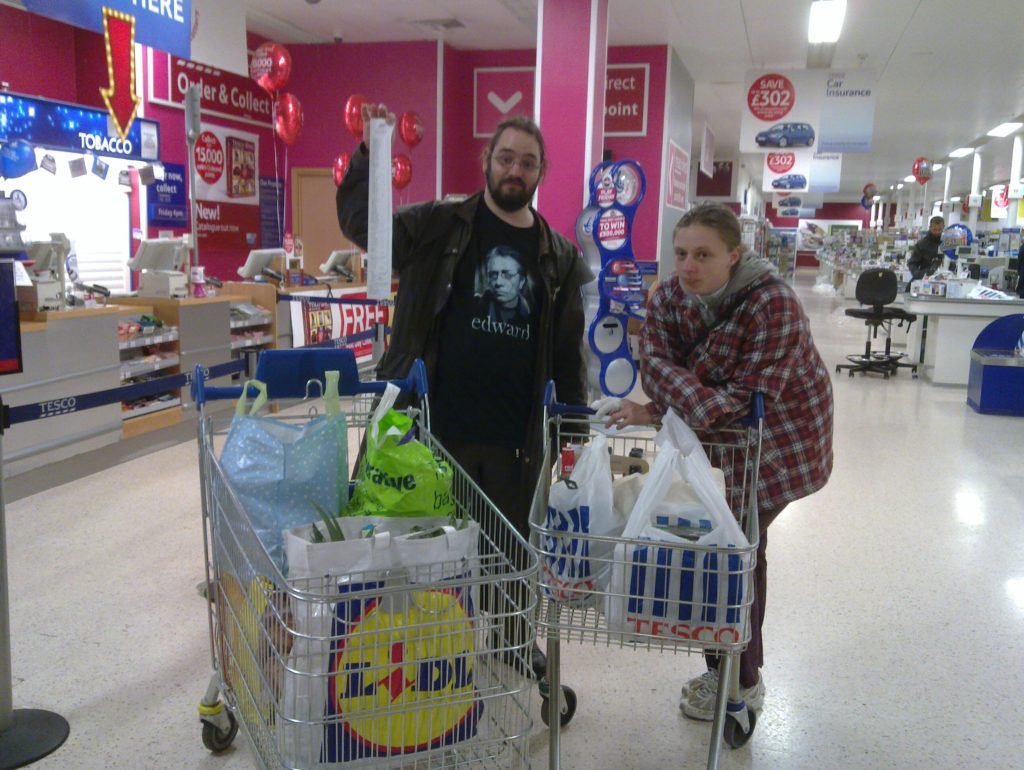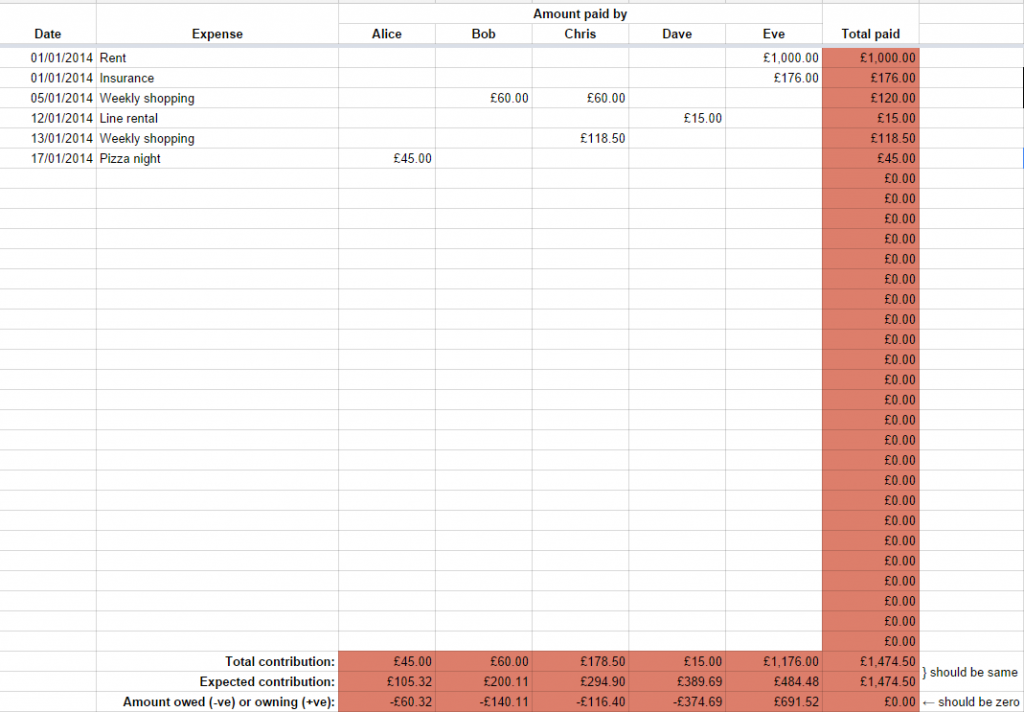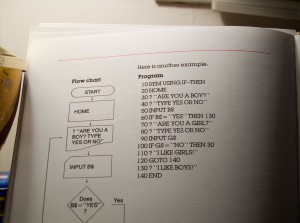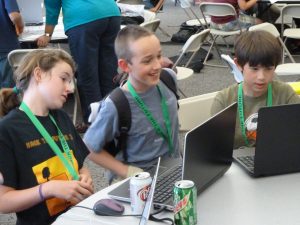[this was originally posted to a private subreddit]

Dan Q
This link was originally posted to /r/MegaLoungeMars. See more things from Dan's Reddit account.
The original link was: https://c1.staticflickr.com/5/4008/4542423536_432b9bfbd2_z.jpg
[this was originally posted to a private subreddit]

This link was originally posted to /r/TerribleBookCovers. See
more things from Dan's Reddit account.
The original link was: https://i.imgur.com/CPzMlMU.jpg
This link was originally posted to /r/TerribleBookCovers. See
more things from Dan's Reddit account.
The original link was: https://i.imgur.com/6Hh75LI.jpg
In 2023 I published an updated version of this blog post. See that post for the latest tips on managing polyfamily finances in a socialist manner.
For the last four years or so, Ruth, JTA and I (and during their times living with us, Paul and Matt) have organised our finances according to a system of means-assessment. I’ve mentioned it to people on a number of ocassions, and every time it seems to attract interest, so I thought I’d explain how we got to it and how it works, so that others might benefit from it. We think it’s particularly good for families consisting of multiple adults sharing a single household (for example, polyamorous networks like ours, or families with grown children) but there are probably others who’d benefit from it, too – it’s perfectly reasonable for just two adults with different salaries to use it, for example. And I’ve made a sample spreadsheet that you’re welcome to copy and adapt, if you’d like to.

After I left Aberystwyth and Ruth, JTA, Paul and I started living at “Earth”, our house in Headington, we realised that for the first time, the four of us were financially-connected to one another. We started by dividing the rent and council tax four ways (with an exemption for Paul while he was still looking for work), splitting the major annual expenses (insurance, TV license) between the largest earners, and taking turns to pay smaller, more-regular expenses (shopping, bills, etc.). This didn’t work out very well, because it only takes two cycles of you being the “unlucky” one who gets lumbered with the more-expensive-than-usual shopping trip – right before a party, for example – before it starts to feel like a bit of a lottery.
Our solution, then, was to replace the system with a fairer one. We started adding up our total expenditures over the course of each month and settling the difference between one another at the end of each month. Because we’re clearly raging socialists, we decided that the fairest (and most “family-like”) way to distribute responsibility was by a system of partial means-assessment: de chacun selon ses facultés.

We started out with what we called “75% means-assessment”: in other words, a quarter of our shared expenditures were split evenly, four ways, and three-quarters were split proportionally in accordance with our gross income. We arrived at that figure after a little dissussion (and a computerised model that we could all play with on a big screen). Working from gross income invariably introduces inequalities into the system (some of which are mirrored in our income tax system) but a bigger unfairness came – as it does in wider society – from the fact that the difference between a very-low income and a low income is significantly more (from a disposable money perspective) than the difference between a low and a high income. This was relevant, because ‘personal’ expenses, such as mobile phone bills, were not included in the scheme and so we may have penalised lower-earners more than we had intended. On the other hand, 75% means-assessment was still significantly more-“communist” than 0%!
When I mentioned this system to people, sometimes they’d express surprise that I (as one of the higher earners) would agree to such an arrangement: the question was usually asked with a tone that implied that they expected the lower earners to mooch off of the higher earners, which (coupled with the clearly false idea that there’s a linear relationship between the amount of work involved in a job and the amount that it pays) would result in a “race to the bottom”, with each participant trying to do the smallest amount of work possible in order to maximise the degree to which they were subsidised by the others. From a game theory perspective, the argument makes sense, I would concede. But on the other hand – what the hell would I be doing agreeing to live with and share finances with (and then continuing to live with and share finances with) people whose ideology was so opposed to my own in the first place? Naturally, I trusted my fellow Earthlings in this arrangement: I already trusted them – that’s why I was living with them!

We’ve had a few iterations, but we eventually settled on a system at a higher rate of means-assessment: 100%! It’s not perfect, but it’s the fairest way I’ve ever been involved with of sharing the costs of running a house. I’ve put together a spreadsheet based on the one that we use that you can adapt to your own household, if you’d like to try a fairer way of splitting your bills – whether there are just two of you or lots of you in your home, this provides a genuinely equitable way to share your costs.

The sheet I’ve provided – linked above – is not quite like ours: ours has extra features to handle Ruth and I’s fluctuating income (mine because of freelance work, Ruth’s because she’s gradually returning to work following a period of maternity leave), an archive of each month’s finances, tools to help handle repayments to one another of money borrowed, and convenience macros to highlight who owes what to whom. This is, then, a simplified version from which you can build a model for your own household, or that you can use as a starting point for discussions with your own tribe.
Start on the “People” sheet and tell it how many participants your household has, their names, and their relative incomes. Also add your proposed level of means-assessment: anything from 0% to 100%… or beyond, but that does have some interesting philosophical consequences.
Then, on the “Expenses” sheet, record each thing that your household pays for over the course of each month. At the bottom, it’ll total up how much each person has paid, and how much they would have been expected to pay, based on the level of your means-assessment: at 0%, for example, each person would be expected to pay 1/N of the total; at the other extreme (100%), a person with no income would be expected to make no contribution, and a person with twice the income of another would be expected to pay twice as much as them. It’ll also show the difference between the two values: so those who’ve paid less than their ‘share’ will have negative numbers and will owe money to those who’ve paid more than their share, indicated by positive numbers. Settle the difference… and you’re ready to roll on to the next month.
Now you’re equipped to employ a (wholly or partially) means-assessed model to your household finances. If you adapt this model or have ideas for its future development, I’d love to hear them.
This link was originally posted to /r/todayilearned. See more things from Dan's Reddit account.
The original link was: http://www.elasmo-research.org/education/shark_profiles/torpediniformes.htm
This self-post was originally posted to /r/MegaLoungesArmy. See more things from Dan's Reddit account.
A few months ago, when the MegaLounges were fewer, I drew a map; censored parts of it so as not to reveal secrets, and posted it to several levels of the MegaLounge structure: e.g. in Mega3, in Mega6, in MegaX. I exposed a complete map of my understanding at the time (which turned out to have a few errrors) in the separate stream /r/MegaManLounge, and received two pieces of criticism:
I keep promising to remake maps – improved maps, with lots of new knowledge as well as information about “side” lounges (like this!) that aren’t part of the main MegaLounge track but are relevant to their history. But if I do:
I’d love to hear people’s thoughts.
Update: I’ve now updated my map – you’ll find fresh copies in Mega3 and in a handful of other, higher lounges. Happy exploring!
This self-post was originally posted to /r/MegaLoungeV. See more things from Dan's Reddit account.
[this was originally posted to a private subreddit]
It’s a bit cruel to /u/Greypo that we’ve got these special threads for that he’s not allowed in. So to even the score, ONLY /u/Greypo is allowed to post on this thread. Everybody else should stop reading now.
I’m serious. This is /u/Greypo‘s space to talk about the rest of us behind our backs, if he wants to.
I’m a big fan of pizza. I use it to celebrate people moving house back to Aber; I use it to bribe people to help me move house; I’ve been known to travel into the next country over in search of the “right” one; over the course of the 300 or so Troma Nights I hosted between 2004 and 2010, it got to the point that our local pizza place would bring our food in through the front door and directly to each consumer; and once we got as far south as Naples, finding the world’s best pizza was among the first things on Claire and I’s minds. I like pizza: you get the picture.
More-lately, I’m also a big fan of making pizza. I’ve always enjoyed making bread, but over the last five years or so I’ve become particularly fascinated with making pizzas. I make a pretty good one now, I think, although I’m still learning and periodically experimenting with different flour blends, cooking surfaces, kneading techniques and so on. Those of you who know how capable I am of being a giant nerd about things should understand what I mean when I say that I’ve gotten to be a pizza nerd.

In pizza-related circles of the Internet (yes, these exist), there’s recently been some talk about pizza cake: a dish made by assembling several pizzas, stacked on top of one another in a cake tin – ideally one with a removable base – and then baking them together as a unit. Personally, I think that the name “pizza cake” isn’t as accurate nor descriptive as alternative names “pizza pie” (which unfortunately doesn’t translate so well over the Atlantic) or “pizza lasagne” (which is pretty universal). In any case, you can by now imagine what I’m talking about. What I’m talking about is an artery-destroying monster.

Not wanting to squander my dough-making skills on something that must be cut to size (proper pizza dough should always be stretched, or in the worst case rolled, to size – did I mention that I’d been getting picky about this kind of stuff?), I opted to go for the lazy approach and use some pre-made dough, from a chilled can. That was probably my first and largest mistake, but a close second was that I followed through with this crazy idea at all.

I didn’t have as deep a cake tin as I’d have liked, either, so my resulting pizza cake was shorter and squatter than I might have liked. Nonetheless, it came together reasonably well, albeit with some careful repositioning of the ingredients in order to provide the necessary structural support for each layer as it was added. I eventually built four layers: that is, from bottom to top – dough, tomato, cheese, pepperoni & mushrooms, dough, tomato, cheese, pepperoni & mushrooms, dough, tomato, cheese, pepperoni & mushrooms, dough, tomato, cheese, pepperoni & mushrooms. As I went along I found myself thinking about calzone.

Using a cake tin with a removable base turned out to be an incredibly wise move, as it proved possible to separate the food from its container by simply running around the outside and then tapping the tin from underneath. It had the weight and consistency of a cake of similar size, and smelled richly like freshly-based bread and cheese: exactly what you’d expect, really. I sliced it into six wedges, “cake-style”, and served it with a side salad to my courageous test pilots.

Ultimately, though, the experience wasn’t one we’re likely to repeat: the resulting dish was less-satisfying than if I’d just gone to the effort of making four regular pizzas in the first place. It was impossible to get an adequately crispy crust over the expanded surface area without risking burning the cheese, and as a result the central bread was unsatisfyingly stodgy, regardless of how thin I’d rolled it in anticipation of this risk. Having toppings spread through the dish was interesting, but didn’t add anything in particular that’s worthy of note. And while we ate it all up, we wouldn’t have chosen it instad of an actual pizza unless we’d never tried it before – once was enough.
But that’s just our experience: if you give pizza cake/pie/lasagne a go, let me know how you get on. Meanwhile, I’ll stick to making my own dough and using it to make my own regular, flat pizzas. The way that the pizza gods intended!
This checkin to GLFPM6BT The Poplars reflects a geocaching.com log entry. See more of Dan's cache logs.
Found while out for a walk with my partner’s baby. Easy find, once we realised which road we needed to start from! Took Travel Sheep travel bug, because the little one was quite taken by it (as will be clear from the photo!). Kidlington needs more caches! TFTC.

This review of OxyBox originally appeared on Google Maps. See more reviews by Dan.
Contrary to others’ reviews, we’ve always found OxyBox to deliver reasonably-priced food at perfectly acceptable speeds. Sometimes we’ve had to wait as long as 40 minutes, but they’ve always told us when this would be the case, and usually we get our food within half an hour. Their bundle deals are good, and on the one ocassion that they weren’t able to fulfil everything in it (they’d run out of prawn crackers) they were happy to substitute in a different, mutually-agreed side in their place.
And they’re always friendly on the phone, too.
This review of The Kings Arms originally appeared on Google Maps. See more reviews by Dan.
A pub that’s like pubs should be. No television; no jukebox; just nice beers and friendly locals and hospitable staff and a dog. And a jar of pickled eggs behind the bar. If I’ve described your idea of pub hell, that’s fine: I didn’t want to see you there anyway. But for those of us who appreciate a pub that genuinely has a pair of older gentlemen playing dominoes in the corner at any given time, this is where you belong.
This self-post was originally posted to /r/SuicideWatch. See more things from Dan's Reddit account.
This link was originally posted to /r/Cows. See more things from Dan's Reddit account.
The original link was: http://i.imgur.com/RhIsQpn.jpg
The BBC ran a story this week about changes to the National Curriculum that’ll introduce the concepts of computing programming to children at Key Stage 1: that is, between the ages of five and seven. I for one think that this is a very important change, long overdue in our schools. But I don’t feel that way because I think there’ll be a huge market for computer programmers in 13+ years, when these children leave school: rather, I think that learning these programming skills provide – as a secondary benefit – an understanding of technology that kids today lack.

Last year, teacher and geek Marc Scott wrote an excellent blog post entitled Kids Can’t Use Computers… And This Is Why It Should Worry You. In it, he spoke of an argument with a colleague who subscribed to the popular belief that children who use computers are more technically-literate than computer-literate adults. Marc refutes this, retorting that while children today make use of computers more than most adults (and far more than was typical during the childhood of today’s adults), they typically know far less about what Marc calls “how to use a computer”. His article is well worth reading: if you don’t have the time you should make the time, and if you can’t do that then here’s the bottom line: competency with Facebook, YouTube, Minecraft, and even Microsoft Office does not in itself demonstrate an understanding of “how to use a computer”. (Marc has since written a follow-up post which is also worth reading.)

An oft-used analogy is that of the automobile. A hundred years ago, very few people owned cars, but those people that did knew a lot about the maintenance and inner workings of their cars, but today you can get by knowing very little (I’ve had car-owning friends who wouldn’t know how to change to their spare tyre after a puncture, for example). In future, the requirements will be even less: little Annabel might be allowed to ‘drive’ without ever taking a driving test, albeit in a ‘driverless’ computerised car. A similar thing happened with computers: when I was young, few homes had a computer, but in those that did one or more members of the family invariably knew a lot about setting up, configuring, maintaining, and often programming it. Nowadays, most of the everyday tasks that most people do with a computer (Facebook, YouTube, Minecraft, Microsoft Office etc.) don’t need that level of knowledge. But I still think it’s important.

Why? Because understanding computers remains fundamental to getting the most out of them. Many of us now carry powerful general-purpose computers in our pockets (disguised as single-purpose devices like phones) and most of us have access to extremely powerful general-purpose computers in the form of laptops and desktops (but only a handful of us use them in a ‘general purpose’ way; for many people, they’re nothing more than a web browser and a word processor). However, we expect people to be able to understand the issues when we ask them – via their elected officials – to make sweeping decisions that affect all of us: decisions about the censorship of the ‘net (should we do it, and to what extent, and can we expect it to work?) or about the automation of our jobs (is it possible, is it desirable, and what role will that mean for humans?). We expect people to know how to protect themselves from threats like malicious hackers and viruses and online scams, but we give them only a modicum of support (“be careful, and install anti-virus software”), knowing full well that most people don’t have the foundation of understanding to follow that instruction. And increasingly, we expect people to trust that software will work in the way that it’s instructed to without being able to observe any feedback. Unlike your car, where you may know that it’s not working when it doesn’t go (or, alarmingly, doesn’t stop) – how is the average person to know whether their firewall is working? You can find out how fast your car can go by pressing the pedals, but how are you to know what your computer is capable of without a deeper understanding than is commonplace?

A new generation of children tought to think in terms of how computers and their programs actually work – even if they don’t go on to write programs as an adult – has the potential to usher in innovating new ways to use our technology. Just as learning a foreign language, even if you don’t go on to regularly use it, helps make you better at your native language, as well as smarter in other ways (and personally, I think we should be teaching elementary Esperanto – or better yet, Ido – to primary school children in order to improve their linguistic skills generally), learning the fundamentals of programming will give children a far greater awareness about computers in general. They’ll be better-able to understand how they work, and thus why they sometimes don’t do what you expect, and better-equipped to solve problems when they see them. They’ll have the comprehension to explain what they want their computer to be able to do, and to come up with new ideas for ways in which general-purpose computers can be used. And, I’ve no doubt, they’ll be better at expressing logical concepts in mutually-intelligble ways, which improves human communication on the whole.
Let’s teach our kids to be able to understand computers, not just “use” them.
This link was originally posted to /r/outside. See more things
from Dan's Reddit account.
The original link was: https://i.imgur.com/QZSwYm1.jpg